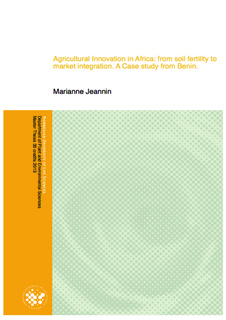| dc.description.abstract | In Benin, in response to the declining soil fertility and its effects on food insecurity and natural
resources, farmers supported by external agents such as researchers, extension services and
NGOs have developed new soil fertility management practices. In this study, we trace the
history of the development of Integrated Soil Fertility Management (ISFM) initiatives in three
different agro-ecological zones of Benin and highlight the different development phases and
outcomes. We also present the different innovations that accompanied the use of ISFM
practices, their triggers, the stakeholders involved and their role. The methodology adopted is
qualitative case study research, where data were collected then analysed and finally validated
by respondents. The data were collected through documents, semi-structure interviews of
purposefully selected respondents and direct observation. The findings shows that ISFM
practices besides being knowledge-intensive are often expensive in time and money but can
raised crop yield and reduce food insecurity of the household. Some key factors for the success
of ISFM initiatives had been drawn from the case studies which are: availability of technological
options where soil fertility is a by-product, implication of farmers and farmers’ local knowledge
during the entire development of soil fertility strategies, existence of partnerships between
different stakeholders with wide range of expertise (e.g. economy, ecology, social sciences) and
activities (e.g. buyers, input suppliers, credit supplier, policy-makers), easy access to inputs,
output and financial market. It also demonstrates that technological changes need to be
combined with social and institutional changes that create an enable environment for scaling-up
of innovation. Thus, it is recommended to use an innovation system-based approach and not
focusing on either the production or the marketing alone, but better working on the issue as a
whole. | no_NO |
